Brown marmorated stink bug (BMSB) is an invasive insect herbivore, native to Asia, that was first discovered in Pennsylvania in 2001. Since then, it has spread to 46 states. This insect species is an extreme generalist, feeding on over 100 different plant species, including field crops, fruits, vegetables, and ornamental plants, creating severe economic injury. In the Midwest, BMSB is currently classified as an agricultural and/or home nuisance pest (Figure 1). As BMSB populations grow in the Midwest, agricultural damage will likely increase.
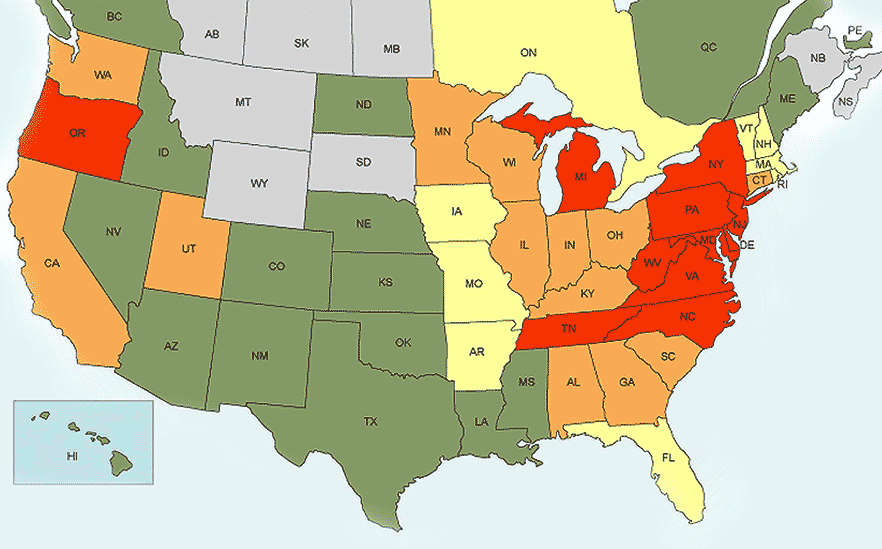
 BMSB detected/intercepted
BMSB detected/intercepted
 Nuisance problems only
Nuisance problems only
 Agricultural and nuisance problems
Agricultural and nuisance problems
 Severe agricultural and nuisance problems reported
Severe agricultural and nuisance problems reported
Figure 1. Current distribution and agricultural risk of brown marmorated stink bug. (stopBMSB.org)
Identification
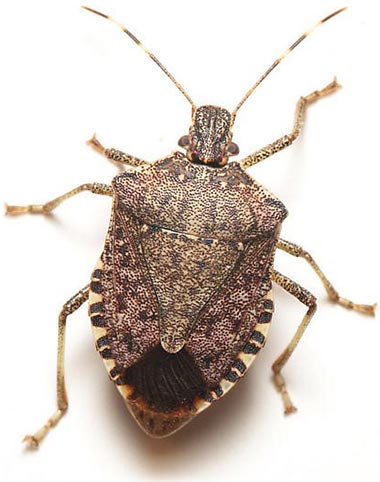 Figure 2. Adult brown marmorated stink bug. (Ken Childs)
Figure 2. Adult brown marmorated stink bug. (Ken Childs)
Brown marmorated stink bug can be distinguished from native species by characteristic white bands on the antennae of both adults and nymphs (Figure 2). Additionally, adults have alternating light and dark banding along abdominal edges.
Life cycle
Females lay egg clusters on the underside of leaves that hatch within three to six days, and after completing five instars, adults emerge approximately three weeks later (Figure 3). Peak populations occur in late summer/early fall. Adults overwinter in woodlands underneath tree bark and human made shelters, such as homes and sheds. Climate models suggest BMSB have two generations per year throughout most of the Midwest.
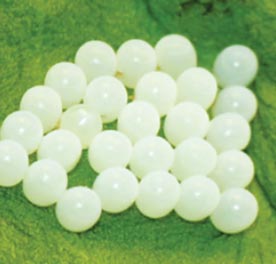 Eggs
Eggs 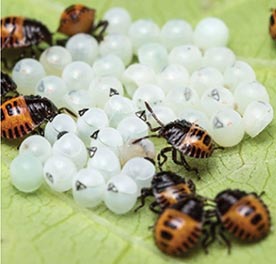 First instar
First instar 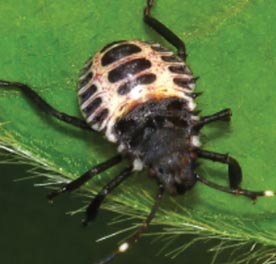 Second instar
Second instar 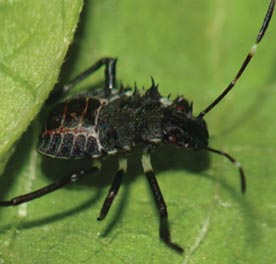 Third instar
Third instar 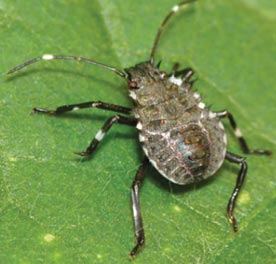 Fourth instar
Fourth instar 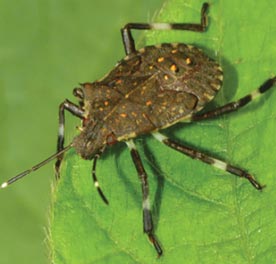 Fifth instar
Fifth instar
Figure 3. Brown marmorated stink bug life cycle. (Ian Grettenberger, University of California Davis)
Field crop damage
Both adults and nymphs create economic injury. In soybean, feeding creates punctured and scarred seeds as well as flattened pods. Under high BMSB populations, soybean experience delayed senescence, resulting in “stay green syndrome” creating additional losses at harvest. In corn, feeding reduces kernel quality and increases disease susceptibility.
Scouting and management
Brown marmorated stink bug is an “edge species” with higher populations occurring along field borders. Economic thresholds for soybean combine all stink bug species into a single action threshold and chemical control is justified when an average of 3.5 stink bugs are collected in 15 sweep net samples (30-inch rows). When applied at threshold, a single border insecticide application controls BMSB for the entire growing season. Action thresholds for corn have not been developed. Consult your local extension office for insecticide recommendations.
This publication is partially funded by a USDA NIFA grant in the Crop Protection and Pest Management Program.